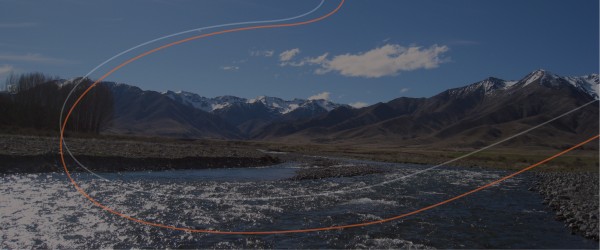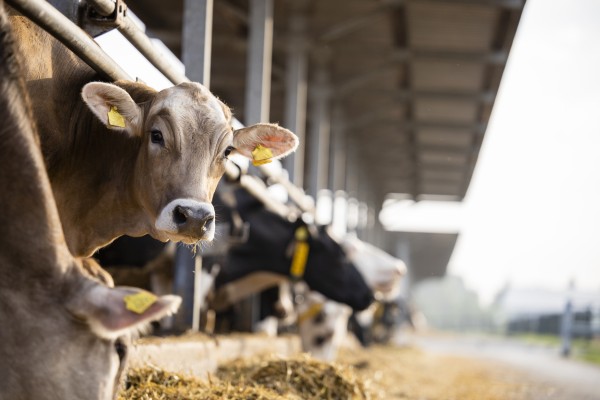References
- Centers for Disease Control and Prevention. Highlights in the history of avian influenza (bird flu) timeline—2020–2024: https://www.cdc.gov/flu/avianflu/timeline/avian-timeline-2020s.htm; 2024
- Uyeki TM, Milton S, Abdul Hamid C, et al. Highly Pathogenic Avian Influenza A(H5N1) Virus Infection in a Dairy Farm Worker. N Engl J Med 2024 doi: 10.1056/NEJMc2405371
- Burrough ER, Magstadt DR, Petersen B, et al. Highly Pathogenic Avian Influenza A(H5N1) Clade 2.3.4.4b Virus Infection in Domestic Dairy Cattle and Cats, United States, 2024. Emerg Infect Dis 2024;30(7) doi: 10.3201/eid3007.240508
- Kvalsvig A, Baker MG. How Aotearoa New Zealand rapidly revised its Covid-19 response strategy: lessons for the next pandemic plan. Journal of the Royal Society of New Zealand 2021:1-24.
- Daszak P, Cunningham AA, Hyatt AD. Emerging Infectious Diseases of Wildlife-- Threats to Biodiversity and Human Health. Science 2000;287(5452):443-49. doi: doi:10.1126/science.287.5452.443
- World Health Organization. Cumulative number of confirmed human cases for avian influenza A(H5N1) reported to WHO, 2003-2024. 2024 28 March 2024. https://cdn.who.int/media/docs/default-source/influenza/h5n1-human-case-cumulative-table/cumulative-number-of-confirmed-human-cases-for-avian-influenza-a(h5n1)-reported-to-who--2003-2024.pdf (accessed 16 April 2024).
- Food and Agriculture Organisation of the United Nations, World Health Organization, World Organization for Animal Health. Joint FAO/WHO/WOAH preliminary assessment of recent influenza A(H5N1) viruses 2024:https://cdn.who.int/media/docs/default-source/global-influenza-programme/2024_04_23_fao-woah-who_h5n1_assessment.pdf
- Nguyen T-Q, Hutter C, Markin A, et al. Emergence and interstate spread of highly pathogenic avian influenza A(H5N1) in dairy cattle. bioRxiv 2024:2024.05.01.591751. doi: 10.1101/2024.05.01.591751
- Kupferschmidt K. To probe outbreak, BSL-3 labs plan to infect cows with flu virus. Science 2024;384(6696):610-11.
- Kristensen C, Jensen HE, Trebbien R, et al. The avian and human influenza A virus receptors sialic acid (SA)-α2, 3 and SA-α2, 6 are widely expressed in the bovine mammary gland. bioRxiv 2024:2024.05. 03.592326.
- Geoghegan J, French N. Thousands of migratory birds will make NZ landfall in spring – will they bring a deadly bird flu with them? The Conversation 2024 August 18, 2023. https://theconversation.com/thousands-of-migratory-birds-will-make-nz-landfall-in-spring-will-they-bring-a-deadly-bird-flu-with-them-211492 (accessed April 11, 2024).
- Kojima N, Adlhoch C, Mitja O, et al. Building global preparedness for avian influenza. The Lancet doi: 10.1016/S0140-6736(24)00934-6
- Ministry of Health. New Zealand Influenza Pandemic Plan: A framework for action (2nd edn). Wellington, 2017.
- World Health Organization. Overview of public health and social measures in the context of COVID-19: interim guidance, 18 May 2020. https://apps.who.int/iris/handle/10665/332115: World Health Organization, 2020.
- Baker MG, Wilson N, Blakely T. Elimination could be the optimal response strategy for covid-19 and other emerging pandemic diseases. BMJ 2020;371:m4907. doi: 10.1136/bmj.m4907
- Baker MG, Kvalsvig A, Plank MJ, et al. Continued mitigation needed to minimise the high health burden from COVID-19 in Aotearoa New Zealand. The New Zealand Medical Journal 2023;136(1583):67-91.
- Boyd M, Baker MG, Wilson N. Border closure for island nations? Analysis of pandemic and bioweapon‐related threats suggests some scenarios warrant drastic action. Australian and New Zealand journal of public health 2020;44(2):89.
- Karger E, Rosenberg J, Jacobs Z, et al. Forecasting Existential Risks: Evidence from a Long-Run Forecasting Tournament (FRI Working Paper #1): Forecasting Research Institute. https://static1.squarespace.com/static/635693acf15a3e2a14a56a4a/t/64abffe3f024747dd0e38d71/1688993798938/XPT.pdf 2023.
- Geddes L. How easy would it be to make a pandemic flu vaccine against H5N1? VaccinesWork: https://www.gavi.org/vaccineswork/how-easy-would-it-be-make-pandemic-flu-vaccine-against-h5n1, 2024.
- Helen Branswell. Massive amounts of H5N1 vaccine would be needed if there’s a bird flu pandemic. Can we make enough? STAT+ Connect. https://www.statnews.com/2024/04/24/h5n1-bird-flu-vaccine-preparedness/, 2024.
- Te Niwha. Likely future pandemic agents and scenarios: An epidemiological and public health framework, 2023:https://www.teniwha.com/assets/Resources/Te-Niwha_Full-Report_Likely-future-pandemic-agents-and-scenarios_Web.pdf.
- Thornton MI, Iannotti A, Quaranta R, et al. The effectiveness of table-top exercises in improving pandemic crisis preparedness. IJSSE 2021;11:463-71.
- Kvalsvig A, Barnard LT, Summers J, et al. Integrated Prevention and Control of Seasonal Respiratory Infections in Aotearoa New Zealand: next steps for transformative change. Policy Quarterly 2022;18(1):44-51.
- Mackenzie JS, Jeggo M. The one health approach—why is it so important?: Trop Med Infect Dis 2019; 4(2): 88.
- Baker M, Crump J, Kvalsvig A, et al. Why we need an Aotearoa Centre for Disease Control (CDC). Public Health Expert Briefing;16 Nov 2023 doi: https://www.phcc.org.nz/briefing/why-we-need-aotearoa-centre-disease-control-cdc
- Baker M, Kvalsvig A, Harwood M. A pandemic that won’t go away–as Covid enters its 5th year, NZ needs a realistic strategy. Public Health Expert Briefing 2024;28 February 2024 doi: https://www.phcc.org.nz/briefing/pandemic-wont-go-away-covid-enters-its-5th-year-nz-needs-realistic-strategy
- Shope RE. Influenza: history, epidemiology, and speculation. Public Health Rep (1896) 1958;73(2):165-78.
- Kilbourne ED. Influenza pandemics of the 20th century. Emerg Infect Dis 2006;12(1):9-14. doi: 10.3201/eid1201.051254
- Smith W, Andrewes CH, Laidlaw PP. A Virus Obtained from Influenza Patients. The Lancet 1933;222(5732):66-68. doi: 10.1016/s0140-6736(00)78541-2
- Salk JE, Francis T, Jr. Immunization against influenza. Annals of internal medicine 1946;25(3):443-52. doi: 10.7326/0003-4819-25-3-443
- Taubenberger JK, Reid AH, Krafft AE, et al. Initial genetic characterization of the 1918 "Spanish" influenza virus. Science 1997;275(5307):1793-6. doi: 10.1126/science.275.5307.1793
- Taubenberger JK, Reid AH, Lourens RM, et al. Characterization of the 1918 influenza virus polymerase genes. Nature 2005;437(7060):889-93. doi: 10.1038/nature04230
- Tumpey TM, Basler CF, Aguilar PV, et al. Characterization of the reconstructed 1918 Spanish influenza pandemic virus. Science 2005;310(5745):77-80. doi: 10.1126/science.1119392
- Scholtissek C. Source for influenza pandemics. Eur J Epidemiol 1994;10(4):455-8. doi: 10.1007/BF01719674
- Dugan VG, Chen R, Spiro DJ, et al. The evolutionary genetics and emergence of avian influenza viruses in wild birds. PLoS Pathog 2008;4(5):e1000076. doi: 10.1371/journal.ppat.1000076
- Cook PW, Stark T, Jones J, et al. Detection and characterization of swine origin influenza A (H1N1) pandemic 2009 viruses in humans following zoonotic transmission. Journal of virology 2020;95(2):10.1128/jvi. 01066-20.
- Claas EC, Osterhaus ADME, van Beek R, et al. Human influenza A H5N1 virus related to a highly pathogenic avian influenza virus. Lancet 1998;351(9101):472-7. doi: 10.1016/S0140-6736(97)11212-0
- Yuen KY, Chan PK, Peiris M, et al. Clinical features and rapid viral diagnosis of human disease associated with avian influenza A H5N1 virus. Lancet 1998;351(9101):467-71. doi: 10.1016/s0140-6736(98)01182-9
- Chan PKS. Outbreak of avian influenza A(H5N1) virus infection in Hong Kong in 1997. Clin Infect Dis 2002;34 Suppl 2(Supplement_2):S58-64. doi: 10.1086/338820
- Ferguson NM, Fraser C, Donnelly CA, et al. Public health risk from the avian H5N1 influenza epidemic. Science 2004;304(5673):968-9. doi: 10.1126/science.1096898
- Gambotto A, Barratt-Boyes SM, de Jong MD, et al. Human infection with highly pathogenic H5N1 influenza virus. Lancet 2008;371(9622):1464-75. doi: 10.1016/S0140-6736(08)60627-3
- Abbott A, Pearson H. Fear of human pandemic grows as bird flu sweeps through Asia. Nature 2004;427(6974):472-73. doi: 10.1038/427472a
- Roberton SI, Bell DJ, Smith GJ, et al. Avian influenza H5N1 in viverrids: implications for wildlife health and conservation. Proceedings Biological sciences 2006;273(1595):1729-32. doi: 10.1098/rspb.2006.3549
- Kandeil A, Patton C, Jones JC, et al. Rapid evolution of A(H5N1) influenza viruses after intercontinental spread to North America. Nat Commun 2023;14(1):3082. doi: 10.1038/s41467-023-38415-7
- Adlhoch C, Baldinelli F. Avian influenza, new aspects of an old threat. Euro Surveill 2023;28(19):2300227. doi: 10.2807/1560-7917.ES.2023.28.19.2300227
- Xie R, Edwards KM, Wille M, et al. The episodic resurgence of highly pathogenic avian influenza H5 virus. Nature 2023;622(7984):810-17. doi: 10.1038/s41586-023-06631-2
- Mahase E. H5N1: Do we need to worry about the latest bird flu outbreaks? BMJ 2023;380:401. doi: 10.1136/bmj.p401
- Agüero M, Monne I, Sanchez A, et al. Highly pathogenic avian influenza A(H5N1) virus infection in farmed minks, Spain, October 2022. Euro Surveill 2023;28(3) doi: 10.2807/1560-7917.ES.2023.28.3.2300001
- UK Dept for Environment Food & Rural Affairs. Confirmed findings of influenza of avian origin in non-avian wildlife https://www.gov.uk/government/publications/bird-flu-avian-influenza-findings-in-non-avian-wildlife/confirmed-findings-of-influenza-of-avian-origin-in-non-avian-wildlife: UK Government; 2023
- USDA Animal and Plant Health Inspection Service. 2022-2023 Detections of Highly Pathogenic Avian Influenza in Mammals https://www.aphis.usda.gov/aphis/ourfocus/animalhealth/animal-disease-information/avian/avian-influenza/hpai-2022/2022-hpai-mammals2023
- Plaza PI, Gamarra-Toledo V, Eugui JR, et al. Recent Changes in Patterns of Mammal Infection with Highly Pathogenic Avian Influenza A(H5N1) Virus Worldwide. Emerg Infect Dis 2024;30(3):444-52. doi: 10.3201/eid3003.231098
- Schnirring L. Tests confirm avian flu on New Mexico dairy farm; probe finds cats positive. 2024 April 3 2024. (accessed April 8 2024).
- USDA. USDA Confirms Highly Pathogenic Avian Influenza in Dairy Herd in New Mexico. 2024 April 1 2024. https://www.aphis.usda.gov/news/agency-announcements/usda-confirms-highly-pathogenic-avian-influenza-dairy-herd-new-mexico (accessed April 8 2024).
- World Health Organization. Disease Outbreak News; Avian Influenza A (H5N1) – the United States of America. 2024 9 April 2024 (updated 10 April). http://www.who.int/emergencies/disease-outbreak-news/iten/2024-DON512 (accessed 11 April 2024).
- Kozlov M, Mallapaty S. Bird flu outbreak in US cows: why scientists are concerned. Nature 2024 doi: 10.1038/d41586-024-01036-1
- NCIRD. Update: Human Infection with Highly Pathogenic Avian Influenza A(H5N1) Virus in Texas. 2024 April 5, 2024. https://www.cdc.gov/ncird/whats-new/human-infection-H5N1-bird-flu.htm (accessed April 7, 2024).
- World Health Organization. Human infection with avian influenza A(H5) viruses. 2024 29 March 2024. (accessed April 11 2024).
- World Health Organization. Influenza at the human-animal interface: Summary and risk assessment, from 27 February to 28 March 20240. 2024 March 2024. https://cdn.who.int/media/docs/default-source/influenza/human-animal-interface-risk-assessments/influenza_summary_ira_ha_interface_march_2024.pdf (accessed 16 April 2024).
- Kupferschmidt K. From bad to worse. Science 2023;380(6640):28-29. doi: 10.1126/science.adi1005
- Centers for Disease Control and Prevention. Technical Report: Highly Pathogenic Avian Influenza A (H5N1) Viruses https://www.cdc.gov/flu/avianflu/spotlights/2022-2023/h5n1-technical-report.htm: Accessed, 2024.
- Wong JY, Kelly H, Ip DK, et al. Case fatality risk of influenza A (H1N1pdm09): a systematic review. Epidemiology 2013;24(6):830-41.
- Petersen E, Koopmans M, Go U, et al. Comparing SARS-CoV-2 with SARS-CoV and influenza pandemics. The Lancet infectious diseases 2020;20(9):e238-e44.
- Böttcher-Friebertshäuser E, Garten W, Matrosovich M, et al. The Hemagglutinin: A Determinant of Pathogenicity. In: Compans RW, Oldstone MBA, eds. Influenza Pathogenesis and Control - Volume I. Cham: Springer International Publishing 2014:3-34.
- Gamblin SJ, Skehel JJ. Influenza hemagglutinin and neuraminidase membrane glycoproteins. The Journal of biological chemistry 2010;285(37):28403-9. doi: 10.1074/jbc.R110.129809
- WHO. A revision of the system of nomenclature for influenza viruses: a WHO memorandum. Bull World Health Organ 1980;58(4):585-91.
- Air GM. Sequence relationships among the hemagglutinin genes of 12 subtypes of influenza A virus. Proc Natl Acad Sci U S A 1981;78(12):7639-43. doi: 10.1073/pnas.78.12.7639
- Sriwilaijaroen N, Suzuki Y. Roles of Glycans and Non-glycans on the Epithelium and in the Immune System in H1–H18 Influenza A Virus Infections. In: Suzuki Y, ed. Glycovirology: Methods and Protocols. New York, NY: Springer US 2022:205-42.
- Wu Y, Wu Y, Tefsen B, et al. Bat-derived influenza-like viruses H17N10 and H18N11. Trends Microbiol 2014;22(4):183-91. doi: 10.1016/j.tim.2014.01.010
- WHO/OIE⁄FAO H5N1 Evolution Working Group. Evolution of the influenza A(H5) haemagglutinin: WHO/OIE/FAO H5 Working Group reports a new clade designated 2.3.4.4. 2015 12 Jan 2015. https://www.who.int/publications/m/item/evolution-of-the-influenza-a(h5)-haemagglutinin-who-oie-fao-h5-working-group-reports-a-new-clade-designated-2.3.4.4 (accessed 14 Apr 2024).
- Leguia M, Garcia-Glaessner A, Muñoz-Saavedra B, et al. Highly pathogenic avian influenza A (H5N1) in marine mammals and seabirds in Peru. Nature Communications 2023;14(1):5489.
- Islam A, Islam S, Flora MS, et al. Epidemiology and molecular characterization of avian influenza A viruses H5N1 and H3N8 subtypes in poultry farms and live bird markets in Bangladesh. Scientific reports 2023;13(1):7912.
About the Briefing
Public health expert commentary and analysis on the challenges facing Aotearoa New Zealand and evidence-based solutions.
Subscribe

Public Health Expert Briefing
Get the latest insights from the public health research community delivered straight to your inbox for free. Subscribe to stay up to date with the latest research, analysis and commentary from the Public Health Expert Briefing.

